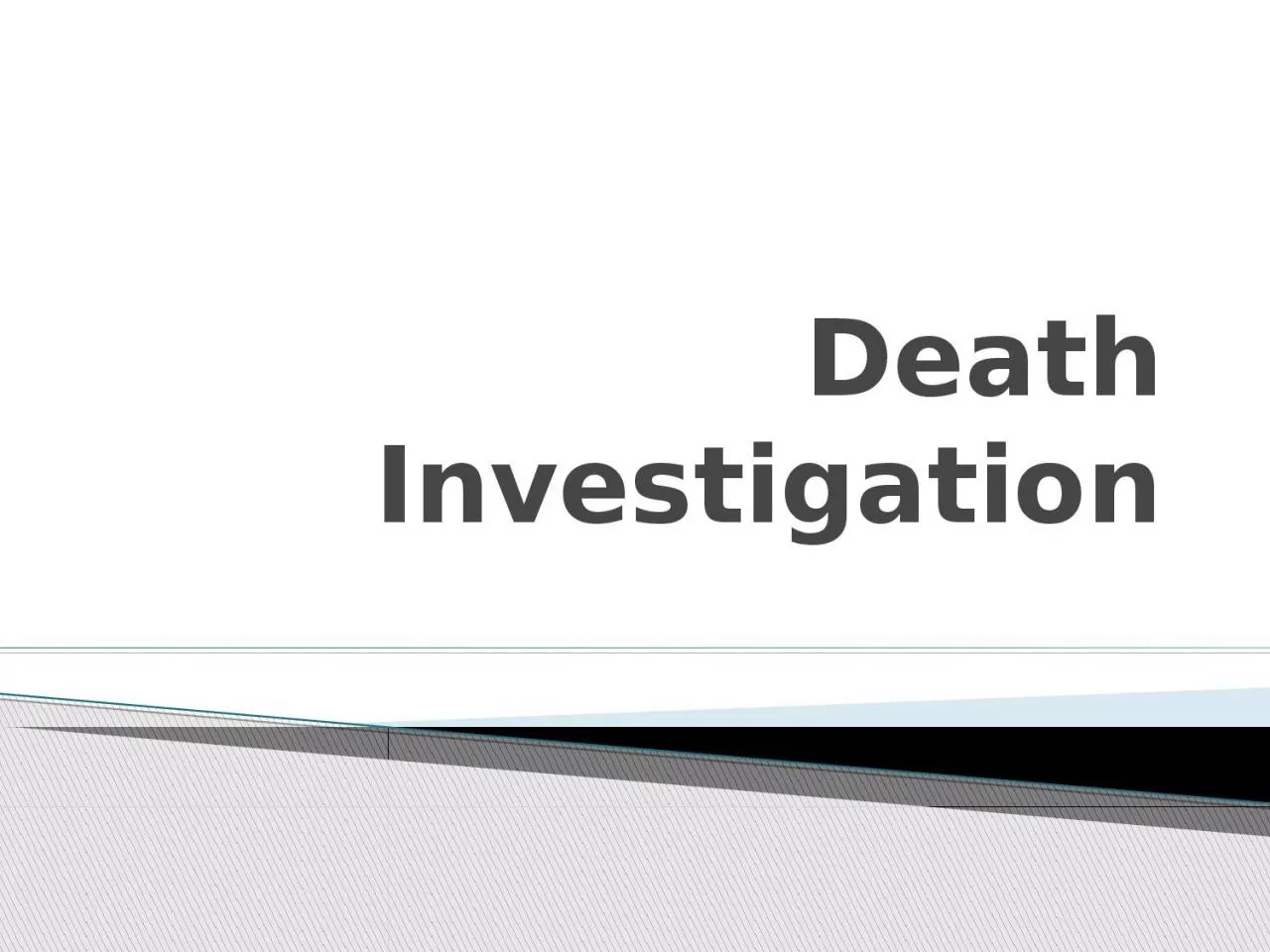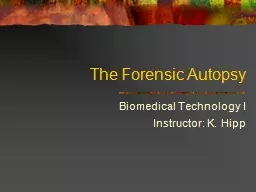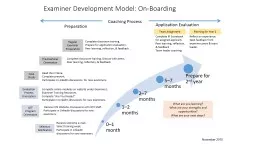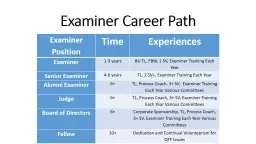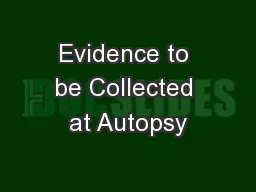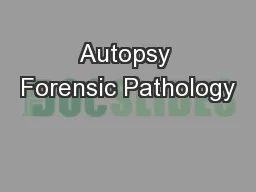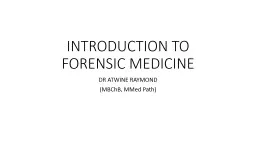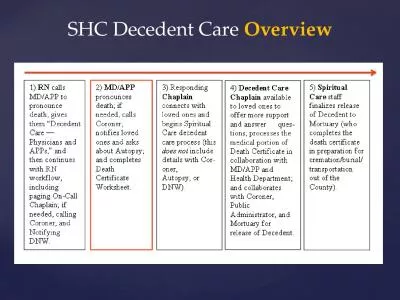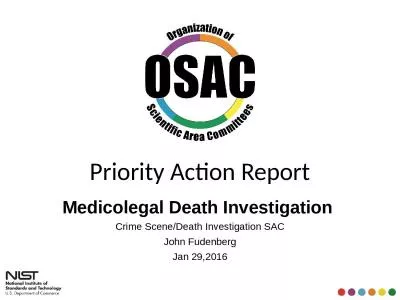PPT-Death Investigation Autopsy and the Role of the Medical Examiner
Author : RainbowGlow | Published Date : 2022-08-02
GAVS 5 Autospy c Evaluate how post mortem changes are used to determine probable time of death Rigor mortis Livor mortis Algor mortis Gastric contents SFS2
Presentation Embed Code
Download Presentation
Download Presentation The PPT/PDF document "Death Investigation Autopsy and the Role..." is the property of its rightful owner. Permission is granted to download and print the materials on this website for personal, non-commercial use only, and to display it on your personal computer provided you do not modify the materials and that you retain all copyright notices contained in the materials. By downloading content from our website, you accept the terms of this agreement.
Death Investigation Autopsy and the Role of the Medical Examiner: Transcript
Download Rules Of Document
"Death Investigation Autopsy and the Role of the Medical Examiner"The content belongs to its owner. You may download and print it for personal use, without modification, and keep all copyright notices. By downloading, you agree to these terms.
Related Documents

